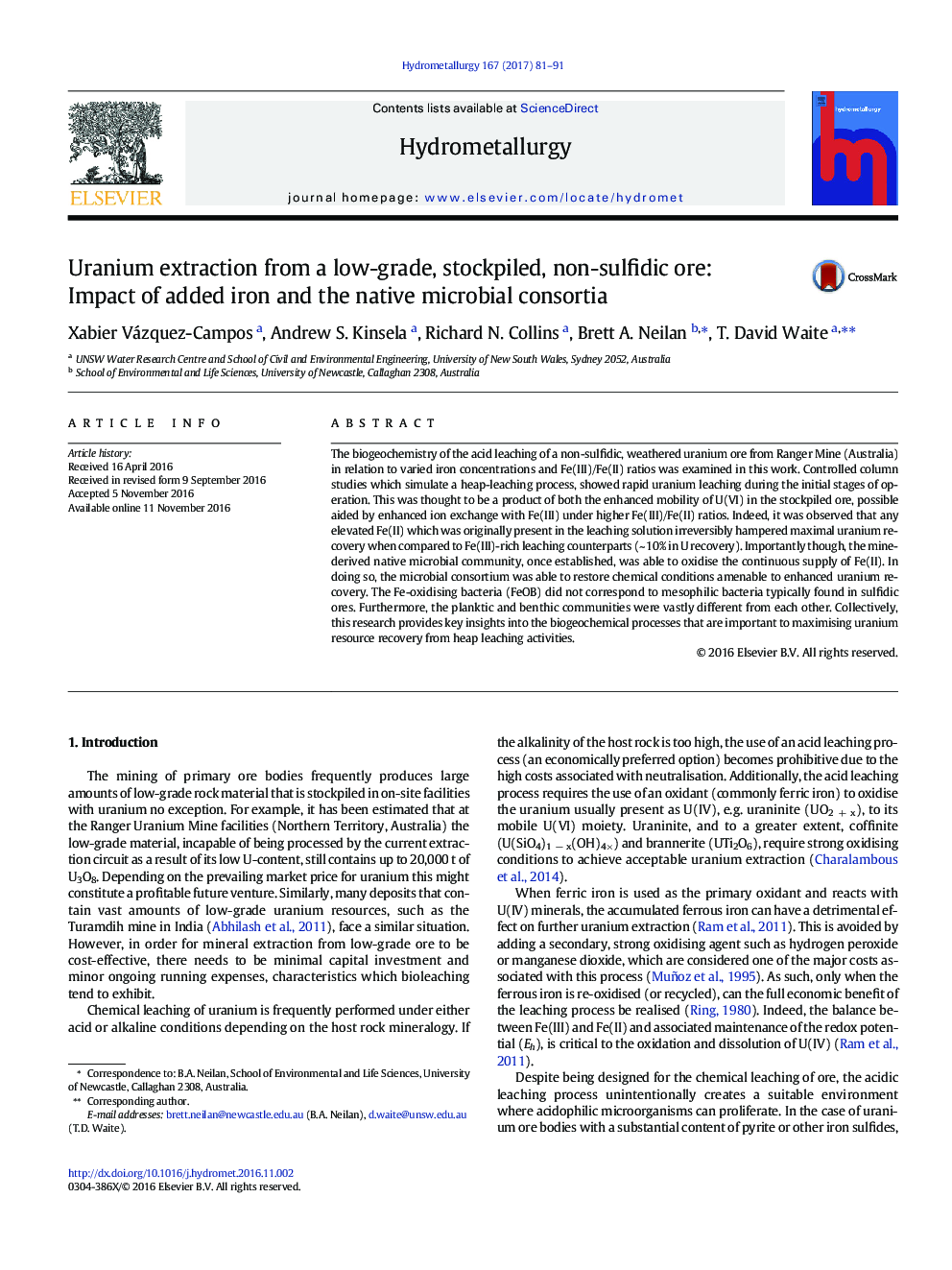| Article ID | Journal | Published Year | Pages | File Type |
|---|---|---|---|---|
| 4769389 | Hydrometallurgy | 2017 | 11 Pages |
â¢Natural weathering of low-grade stockpiled ore may alter U oxidation state.â¢Fe(III) enhances U recovery through oxidation, possibly aided by ion exchange processes.â¢Native microbial community continuously oxidises Fe(II) in the absence of sulfides.â¢Fe-oxidisers different to those found in mesophilic sulfidic ore leachingâ¢Major differences exist between benthic and planktic bacteria.
The biogeochemistry of the acid leaching of a non-sulfidic, weathered uranium ore from Ranger Mine (Australia) in relation to varied iron concentrations and Fe(III)/Fe(II) ratios was examined in this work. Controlled column studies which simulate a heap-leaching process, showed rapid uranium leaching during the initial stages of operation. This was thought to be a product of both the enhanced mobility of U(VI) in the stockpiled ore, possible aided by enhanced ion exchange with Fe(III) under higher Fe(III)/Fe(II) ratios. Indeed, it was observed that any elevated Fe(II) which was originally present in the leaching solution irreversibly hampered maximal uranium recovery when compared to Fe(III)-rich leaching counterparts (~Â 10% in U recovery). Importantly though, the mine-derived native microbial community, once established, was able to oxidise the continuous supply of Fe(II). In doing so, the microbial consortium was able to restore chemical conditions amenable to enhanced uranium recovery. The Fe-oxidising bacteria (FeOB) did not correspond to mesophilic bacteria typically found in sulfidic ores. Furthermore, the planktic and benthic communities were vastly different from each other. Collectively, this research provides key insights into the biogeochemical processes that are important to maximising uranium resource recovery from heap leaching activities.
